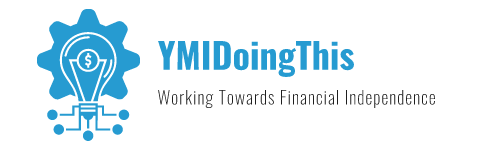Things happen. Maybe you just graduated from college, or just got married, bought a home or had some unexpected expenses, or it could even be that life just happened and you find yourself up to your eyeballs in debt. A mortgage, student loans credit cards, car loans, home equity loans, and even payday loans, maybe you’ve even got more but all you want to know which debts to pay off first and why. So many financial advisers have differing opinions, which is best for your situation? Let’s look at two different ways to tackle the issue, first from the purely financial standpoint and then we’ll look at it from an emotional standpoint.
Focusing on High Interest Balances First
Here’s the theory on paying off the balances with the highest interest rate first. Let’s say you have an extra $100 to pay on any of your debts. You could pay it on the car loan that you are paying 6% on or you could pay it on the credit card that you are paying 15% on. The choice seems simple, if you pay it on the balance with the higher rate, that is the amount you save on the payment. Over the life of the loan every extra payment you make you save the interest on that part of the balance. In this case it would be the difference between the 6% and 15%. You save an extra 9% by applying your payment to the higher interest balance.
For some, seeing those numbers is all it takes to make the decision to always make extra principal payments on the loan balance with the highest interest rate. It just makes sense financially.
When you are deciding what debt to pay off first from a purely financial standpoint I like to go by the old saying, “those who understand interest earn it, and those who don’t pay it.” Using this method and concept what you want to do is figure out which of your debts have the most cost associated with them and start there. The best way to do this is to create a list of all of your debts and the amount of interest you pay first.
The next step is to order them in the order of highest interest first working your way down to the lowest interest rate loans. There are a couple of other factors you may want to consider like whether or not the interest is tax deductible if that is something you qualify for. If it is it may be worth it to factor the amount you’ll be able to deduct in the calculation of which has the highest rate.
After you have a list of the debts make a list of the amount of the minimum payment on each. What the goal is here is to make the minimum payment on all of the debts except the first one on the list, the one with the highest interest rate. This is the one you want to concentrate your efforts on. You may have to make a budget to find any extra money available to pay towards that highest interest loan.
Depending on your situation, you may be able to pay this first one off soon. The key is to make sure that after you pay that first one off you take all of the amount you were paying on it and roll that same amount right into the second loan. The process continues until you have paid off all of your debts.
Focusing on Lowest Balance First
Here’s the theory on attacking the lowest balance loan first. It’s pretty simple. If you are in debt, sometimes developing and carrying out a long term plan can seem daunting and even become discouraging if you don’t see some immediate success like paying off a balance. It’s an emotional win, you feel good and get to take that momentum on into the next balance helping you stay motivated to keep on going.
Looking at this issue of what debt to pay off first from an emotional standpoint is basically the same, except instead of listing your loans in order of the highest interest rate first you would list the debts from smallest to largest. Why this way? Well, listing the loans in this way and applying any extra payments to that smallest loan you’ll pay it off the quickest, which gives you that emotional victory of completing the first stage of the process.
For some people this emotional victory is what empowers them to keep on working on the next loan in the process. With each loan that is paid off the amount of payment is then rolled into the next loan. Every time a loan is paid off the amount you pay on the next one increases, which makes the next bigger loan seem less daunting when you start making those extra payments.
Either way you choose you can be successful. One way you will save a little more on the total amount of interest you pay as you pay off the debts and the other you will get that first emotional victory sooner. What matters most in the process is that you decide on a plan of which debt to pay off first and then stick with the plan until it has been completed.
Which is Best?
Just like I’ve heard from many financial advisers and accountants, it depends. This is one that you have to decide which would work best for you. As for me, at this point, I’m all about the bottom line. Whichever is going to save me more money, so I would opt for paying off the highest interest loans first. If I feel I need a win by wiping out a balance sooner, I’ll need to find a way to make a few bigger payments whether that be by cutting some expenses or taking on another side gig to make it work.

